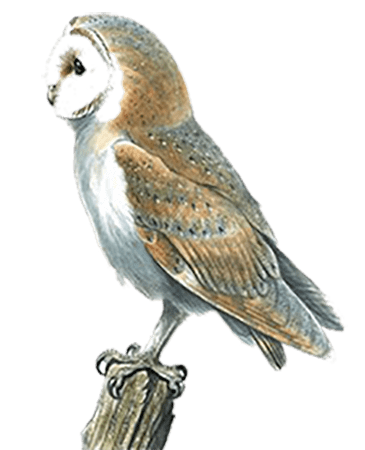Barn Owls
With a heart-shaped face and pure white underparts, the barn owl is a distinctive and much-loved countryside bird. Widely distributed across the UK, and indeed the world, this bird has suffered declines through the 20th century and is thought to have been adversely affected by organochlorine pesticides such as DDT in the 1950s and ’60s.
Nocturnal birds like the barn owl are poorly monitored by the Breeding Bird Survey and, subject to this caveat, numbers may have increased between 1995-2008.
Barn owls are a Schedule 1 and 9 species.
It is almost impossible to tell if a Barn Owl is male or female just seeing it fly overhead. However, a close look may give you a clue.
Females often have darker brown feathers around the rim of the facial disc as well as darker bars on the tail and small black spots on the chest and underside of the wings. Males are generally lighter and a more pure white underneath.



